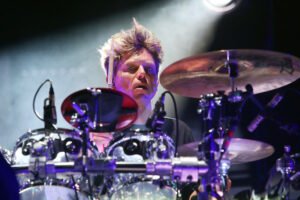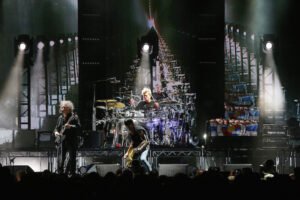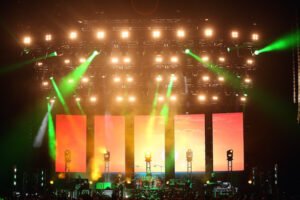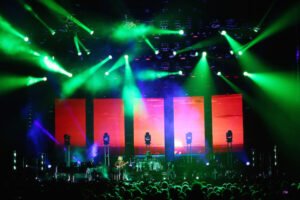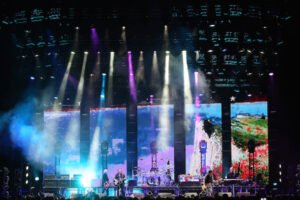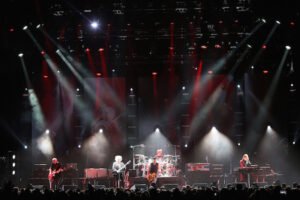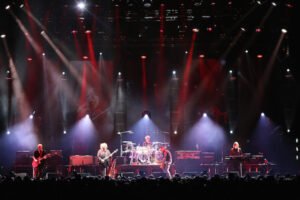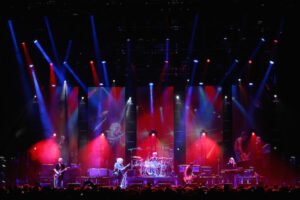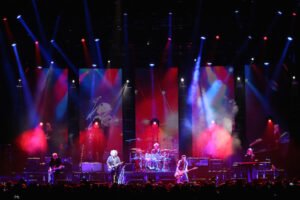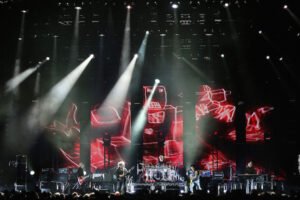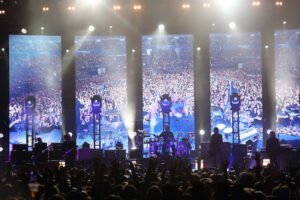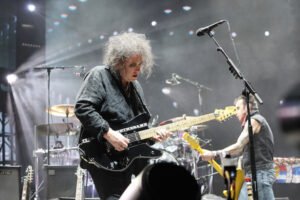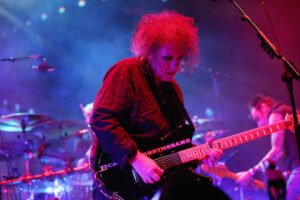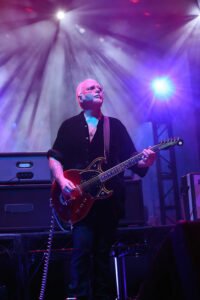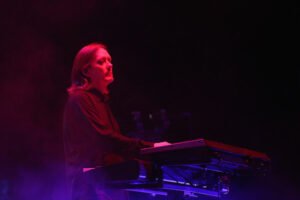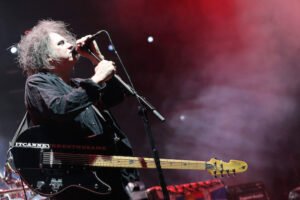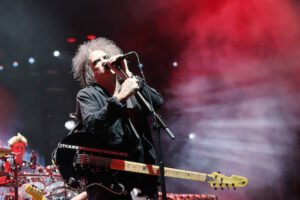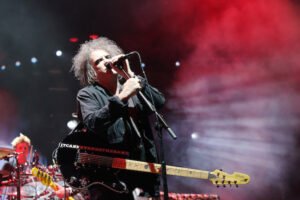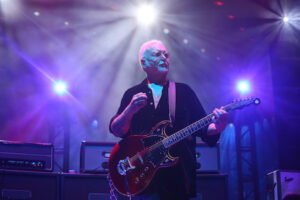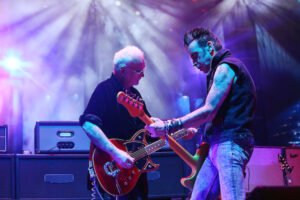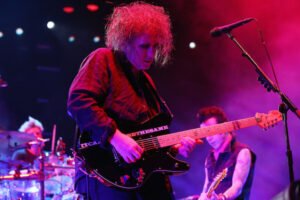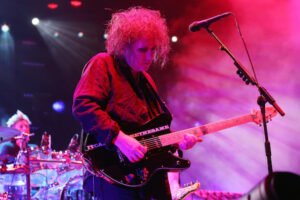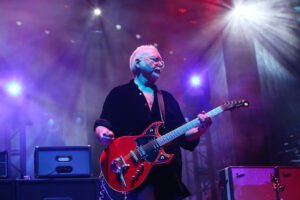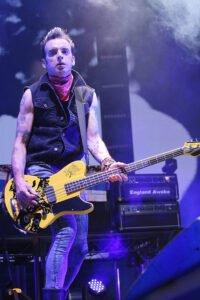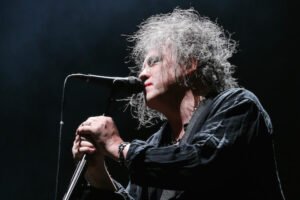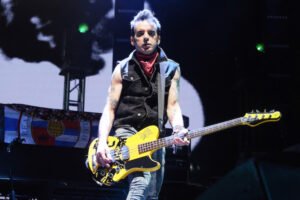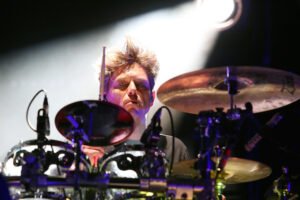News
17 Aug 2016
LIVE: The Cure Production Report
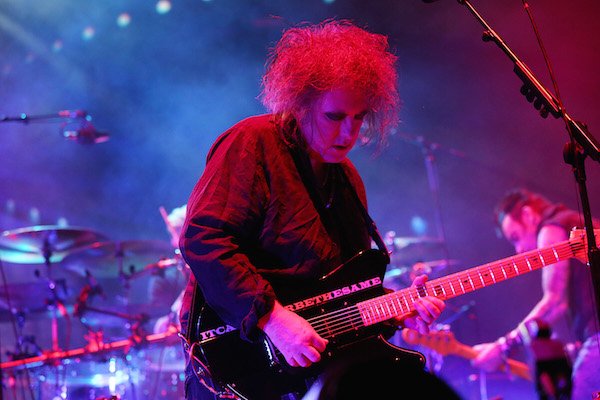
Subscribe to CX E-News
By Cat Strom
There aren’t many artists who can perform for three hours and after 36 songs including four encores, have people still chanting for more.
The Cure did just that at Auckland’s Vector Arena where their performance was hailed as a once in a lifetime concert for all attending. With little fanfare, they took to the stage to embark on a show that had way too many highlights to register. The show was an intense rollercoaster of emotions and not once did they come across as old rockers churning out the hits.
The backdrops and lighting visuals throughout the night echoed the emotions adding a whole other layer to the show. The visuals were cleverly thought out and turned the show into a beautiful sight to behold.
The man behind this was Angus MacPhail who has had an illustrious career lighting legends such as Generation X, Joy Division, and Siouxsie & The Banshees. He first worked with The Cure back in the eighties when he decided to do something quite radical – add floor cans to the show!
“It was a time when Genie towers with Par cans on them were state of the art,” Angus recalled. “I did a Dr Feelgood tour once and was most impressed to actually have a truss.”
Fast forward a few decades and Angus is still producing atmospheric, dark and moody lighting. Sometimes he gets notes and instructions from Robert Smith, sometimes he is left to his own creativity.
“The songs and their lyrics are always the theme and to an extent, dictate how the lighting should be,” said Angus. “Over the decades that does not change, but what does change it is the technology and the equipment available to use so you can produce the same theme but on a grander scale.”
Angus works hard to ensure there is a balance between the video content and the brightness of the lighting, saying many people do not get that right.
“It’s not easy to get a perfect balance but I try as much as I can,” he added. “Everything on the stage then merges into a single picture.”
Along with programmer Ben Hornshaw, Angus spent close to a month programming around 120 songs in preparation for the tour.
“It was very time consuming and there are still songs in the repertoire that I know I only have the bare bones for as they haven’t been used yet,” Angus admitted. “It’s a constant evolution, every time you hear a song you know you can tweak a little bit here and there.”
At the start of the design process Angus knew that he wanted a staggered, simple truss formation with curved edges. The front truss was moved more downstage so that Angus did not need follow spots, as this way he achieved enough front light at a good angle.
“I knew I wanted a lot of firepower at the back which we have with a lot of rear lighting options,” he added. “I’ve always liked side lighting so I have an annoying amount on this show although I try not to blind people. I also wanted an unmasked riser as I had all these lights low down at the back and when they shine through it looks like the riser is floating.”
Downstage edge on the floor are Clay Paky Sharpy washes with Mythos and GLP impression X4L fixtures circling the stage. GLP impression X4S are located around the risers.
The truss holds mainly PRG BestBoy Spots and Washes along with GLP impression X4 Bar 20 fixtures with Angus favouring their tilt function. Strobes were a mixture of Martin Atomics and TMB Solaris Flare. LED Strobes.
“It’s all very minimal and open,” said Angus. “Everything has a slight curve on it; the truss, the risers, the lights at the side, the screens at the back.”
Normally the video screen at the back is split into five sections with torms inbetween each holding four Ayrton MagicBlades, two Clay Paky Mythos, a Martin Atomic Strobe, a GLP impression X4L and a PRG BestBoy Wash. However at Vector it had to be one big screen. The five towers that normally sit in front of each screen were still used with each one housing an Atomic, a gelled eight-liter for a more opaque finish, a couple of Sharpy and topped off with a BestBoy Spot.
“Most people are very wary of placing lighting in front of a screen but it’s never bothered me,” Angus said. “You can still see the image if the tower is fairly minimalist and I like the way the towers stand out against the backdrop.”
An MA Lighting MA2 was used for control with Angus commenting that he is at the point in his life where he knows it is smart to have a programmer!
“Ben can do it in half the time it takes me and it also allows me to sit back and concentrate on the design and not how long it will take to program it,” he said. “We work together as a team alongside Dan Large with the video content.
“It’s important to enhance the music and not second guess it. With a cue, it’s better to be late than a little early unless of course it’s a cue that’s supposed to be early, like a dramatic effect cue. The audience get the surprise of hearing a particular thing in a song, and then there’s a light to enhance it.”
Globally the audio package is supplied by Britannia Row Productions and wherever the tour goes there’s a universal FOH and monitor system. An L-Acoustics K1/K2 PA is preferred but in New Zealand where Oceania Audio is the local supplier through strong connections with Britannia Row, an Electro-Voice X-Line PA was used.
“Both companies have supplied and serviced an EV system for the last ten years so there’s a lot of trust in what Oceania can deliver,” commented Adam Smith, Systems Engineer on the tour. “There’s a strong team of local engineers who have designed and installed the system on our behalf. We’ve come in to try enhance the situation further. The Oceania guys are very up to speed on the EV’s development and its IRIS-Net system management.”
In Vector Arena there was a main left/right hang of twelve EV X-Line Xvls with two X-Line Xvlt trapezoid versions of the Xvls as a downfill on the main system with some LF reinforcement flying some subs behind the main left /right in a contour mode. On the side hangs there are up twelve X-Line Xvls with L-Acoustic Arcs filling in a shadow. A series of Xsubs were situated on the ground in a sub arc, 18 elements in groups of three equally spaced across the front with some L-Acoustics dV-Dosc front fill and some Arc outfill.
A different PA didn’t phase FOH engineer Paul Corkett who has been mixing FOH for The Cure since 2011 when Robert lured him away from his more usual studio environment.
“When we first switched on the EV X-Line it felt pretty different to what we’ve been using but we just run a previous show through it and do our tweaks,” he said. “The rooms are always changing anyway and they all have different characteristics and we tune the PA to how we want to hear it. We’re pretty consistent in what we do.”
Paul describes himself as someone who translates what comes off the stage; all the dynamics from the band, all the effects. His job is to enhance that performance and make the shows as exciting as possible. Robert’s brief to Paul is basically that he should be able to run the mix with minimal tweaks.
“It should all come straight from the band so hence I don’t use gates or compressors,” added Paul. “Originally I did but when Robert listened to it, he said he didn’t feel the dynamics of the band. So now I leave it really open with no effects at all, it all comes off stage. There is one vocal delay and that’s it. With the nature of the rooms we play, there’s usually a 3 – 5 second natural reverb so adding stuff just confuses it. All the effects come off the guitars and all the dynamics come off the band. When it’s a three hour show, it makes it much more exciting than running one slab of compressed sound.”
After initial rehearsals for the tour Paul remarked that they came out in a good place and all he has to do is basically tune the PA. Robert may give him a few notes after a show but basically it’s pretty set.
Paul has been mixing with an Avid Venue Profile for the past five years favouring the way it integrates with the Pro Tools system and every show is recorded to two Pro Tools rigs.
“We record audience mics with about 80 signals coming into the board so the show can be mixed for later use,” he said. “Microphones consist of a basic drum package of Shure 91 inside the bass drum, Shure 52 outside, Shure 57 on top of snare, Neumann 105 underneath the snare, HDT P-98’s on cymbals as well as AKG414’s. We used to mic all the amplifiers but now we’re coming straight out of the amps via Palmer or Radial boxes. It sounds surprisingly tight.”
Robert’s lead vocal microphone is a DPA D:Facto which he only started using on this tour. Paul reports that it has great sound rejection which is a necessity as the stage is very loud plus the kit is on a riser quite close to the vocal mic.
The stage is heavily populated with monitors with monitor engineer Rob Elliot describing the set up as pretty old school as the band has been playing through monitors for forty odd years.
“Only the keyboard player and drummer use in-ear monitors,” he said. “Everyone else uses wedges LOUD. Robert’s is especially loud, his rear wedge has got everything in it mixed quite loud and that’s what he likes, to hear a complete mix with him up on the stage.”
Rob admits he did approach Robert about using in-ears but Robert replied NO before he could finish asking the question!
Rob recently switched to using a DiGiCo SD5 for mixing having used a Yamaha PM5d for the past ten years.
“It got to the point where I couldn’t fit anything more in or out of the board,” he explained. “At first Robert was hesitant to change as it sounded good but it was more of a technical situation and it does sound great.”
Again Rob uses no effects, gates or compressors. Well almost, he does have a little bit of compression on the ambient mics behind the keyboard player, which he feeds into his ears, and the drummer …. but sshhh don’t tell Robert!
“During the show, I hardly touch the board unless Robert tells me to as he doesn’t like anyone to fiddle with anything, I just sit there and keep an eye on him,” commented Rob. “I send the drummer sends and he mixes them himself on his little Mackie 16 channel mixer. The other three, once they’re set don’t require anything so basically I’m keeping an eye on Robert for three hours.”
Photos by Troy Constable
Disclaimer: CX travelled to New Zealand to cover The Cure at Auckland’s Vector Arena however the live photos in this article are from the Sydney show at Qudos Bank Arena where the full lighting rig was used.
Subscribe
Published monthly since 1991, our famous AV industry magazine is free for download or pay for print. Subscribers also receive CX News, our free weekly email with the latest industry news and jobs.

